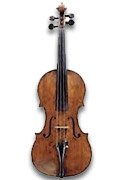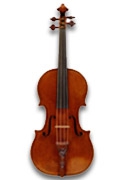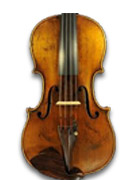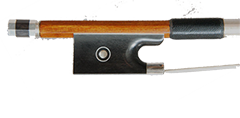Introduction
The violin, an instrument revered for its expressive range and emotional depth, has a rich history intertwined with the evolution of music itself.
While Italy often garners the spotlight for its contributions to the development of the violin, France has played an equally crucial, though sometimes underappreciated, role in the instrument's history.
The story of the French violin is one of artistic innovation, technical mastery, and cultural significance, spanning centuries from the instrument's early days to its prominent role in modern orchestras and solo performances.
This article explores the intricate journey of the French violin, tracing its origins, the rise of influential violin makers (luthiers), its impact on the musical world, and its continued evolution in the present day.
We will delve into the lives of key figures, the development of specific violin-making schools, and the cultural shifts that influenced the violin’s role in French society.
Through this exploration, we will gain a deeper appreciation for the French contribution to this beloved instrument and its enduring legacy.
The Origins of the Violin in France
The violin, as we recognize it today, emerged in the early 16th century in northern Italy, with its design evolving from earlier string instruments like the medieval fiddle and rebec.
By the late 16th and early 17th centuries, the violin had made its way to France, where it began to capture the attention of musicians and instrument makers alike.
During this period, the French court was a significant cultural hub in Europe, and music played a central role in the lives of the aristocracy.
The introduction of the violin to France can be attributed to traveling Italian musicians and the growing popularity of the instrument across Europe.
French royalty and nobility, eager to emulate Italian culture, started to patronize violinists and composers, which led to the establishment of a nascent violin tradition in France.
However, it was not until the 17th century that France began to develop its own distinct identity in the world of violin making and playing.
The 17th Century: The Dawn of French Violin Making
The 17th century marked the beginning of a flourishing period for French violin making.
During this time, the influence of Italian luthiers was still strong, but French craftsmen began to innovate and create instruments that reflected their unique sensibilities.
The most prominent early French luthier was Nicolas Médard (1595–1670), who worked in Paris and is considered one of the pioneers of the French violin-making tradition.
Médard’s violins were noted for their excellent craftsmanship and tonal qualities, setting a high standard for future generations of French luthiers.
In addition to Médard, other early French luthiers such as Jean-Baptiste Voboam and the first members of the Tywersus family contributed to the development of the French school of violin making.
These luthiers, while influenced by their Italian counterparts, began to establish distinct characteristics in their instruments,
such as a preference for a darker, more robust sound and a focus on elegance in design.
The establishment of the royal court in Paris as a center of musical activity also played a crucial role in the development of the French violin.
The court’s demand for high-quality instruments fueled the growth of the violin-making industry in France, and Paris became a hub for luthiers, musicians, and composers.
This period laid the groundwork for the emergence of a distinctly French style of violin making and playing, which would come into full bloom in the following century.
The 18th Century: The Golden Age of French Violin Making
The 18th century is often regarded as the golden age of French violin making, a period during which France produced some of the most esteemed luthiers in history.
This era was marked by significant advancements in the craft of violin making, as well as the establishment of French violinists and composers who would leave a lasting impact on the musical world.
One of the most influential figures of this time was Jean-Baptiste Vuillaume (1798–1875), often hailed as the greatest French luthier of all time.
Vuillaume’s workshop in Paris became a center of innovation, where he combined traditional Italian techniques with his own inventions and improvements.
He was known for his meticulous attention to detail and his ability to create violins with exceptional tonal quality. Vuillaume’s instruments were highly sought after by musicians across Europe, and his legacy continues to influence violin making to this day.
Another key figure in the 18th century was François-Louis Pique (1758–1822), who is credited with refining the French violin to its classical form.
Pique’s violins were characterized by their elegant design, superior craftsmanship, and a sound that balanced power with subtlety. His work laid the foundation for the Paris school of violin making, which would dominate the French violin scene in the 19th century.
During this period, the French violin also gained prominence on the international stage through the work of virtuoso violinists and composers.
Jean-Marie Leclair (1697–1764), often called the "father of French violin playing," was a pivotal figure in developing a distinct French style of violin performance.
Leclair’s compositions and playing technique combined Italian virtuosity with French elegance, and his work had a profound influence on subsequent generations of violinists.
The 19th Century: Expansion and Innovation
The 19th century was a time of great expansion and innovation in the world of the French violin.
As the industrial revolution swept through Europe, the demand for violins increased, and French luthiers responded by producing instruments on a larger scale while continuing to maintain high standards of craftsmanship.
Jean-Baptiste Vuillaume’s influence continued to be felt throughout the century, not only through his own work but also through the success of his students and collaborators.
Vuillaume’s workshop produced some of the finest violins of the 19th century, and he was instrumental in popularizing the Stradivarius model, which became the gold standard for violin makers around the world.
In addition to Vuillaume, other notable luthiers of the 19th century included Nicolas Lupot (1758–1824), who was known for his meticulous craftsmanship and his ability to replicate the sound and aesthetics of the Italian masters, particularly Stradivarius. Lupot’s instruments were highly prized by musicians, and his work helped to cement the reputation of French violins as among the best in the world.
The 19th century also saw the rise of virtuoso violinists who showcased the capabilities of French violins on the international stage.
Among them was Charles-Auguste de Bériot (1802–1870), a Belgian-born violinist who spent much of his career in France.
De Bériot’s playing was characterized by its technical brilliance and expressive depth, and he was instrumental in developing the French-Belgian school of violin playing, which combined the precision of French technique with the passionate intensity of the Belgian style.
During this period, the French violin also found its way into the burgeoning symphony orchestras and chamber music ensembles of the 19th century.
The rich, warm sound of French violins made them particularly well-suited for the Romantic repertoire, and they became a staple in orchestras across Europe.
Violin Making in Mirecourt :
Introduction
Mirecourt, a small town nestled in the Vosges department of northeastern France, is renowned worldwide as the heart of French violin making.
For centuries, this picturesque town has been a beacon of craftsmanship, nurturing generations of skilled luthiers who have contributed to the development and refinement of string instruments, particularly the violin. Mirecourt’s legacy in violin making is not just a story of individual artisans, but a testament to a vibrant community that turned a local craft into an internationally recognized art form.
This article delves into the rich history of violin making in Mirecourt, exploring its origins, its rise to prominence, and the luthiers who made it the epicenter of French string instrument craftsmanship.
Mrecourt - Influences and Innovations
During the 17th and 18th centuries, Mirecourt luthiers were heavily influenced by the Italian school of violin making, particularly the work of the great Cremonese masters like Antonio Stradivari and Giuseppe Guarneri. However, rather than merely imitating these Italian designs, Mirecourt artisans adapted and refined them, developing their own distinctive style.
This involved not only changes in the instrument’s aesthetics but also innovations in the internal construction that affected the violin’s sound and playability.
The 19th Century: Mirecourt’s Golden Age
The 19th century is often regarded as the golden age of violin making in Mirecourt.
During this time, the town became the undisputed center of French lutherie, with a thriving industry that produced instruments not only for the French market but also for export across Europe and beyond.
The success of Mirecourt’s violin-making industry was due to several factors, including the rise of the bourgeoisie, which created a growing demand for musical instruments, and the industrialization of production techniques.
Mirecourt - Industrialization and Craftsmanship
One of the key developments in Mirecourt during the 19th century was the introduction of more efficient production methods.
Workshops began to adopt a semi-industrial approach, where different parts of the violin-making process were divided among specialized craftsmen.
This allowed for greater efficiency and consistency in production while maintaining a high standard of quality.
Despite these changes, the craftsmanship and artistry of Mirecourt luthiers remained central to the town’s reputation.
Prominent Mirecourt Luthiers and Workshops
Several luthiers and workshops emerged as leaders in Mirecourt during the 19th century, contributing significantly to the town’s fame. Among them were:
-
Jean-Baptiste Vuillaume (1798–1875): Although originally from Mirecourt, Vuillaume moved to Paris, where he became one of the most celebrated luthiers of all time. He maintained strong ties with Mirecourt, often sourcing materials and skilled workers from the town, and his influence helped to elevate the reputation of Mirecourt-made instruments.
-
Nicolas Lupot (1758–1824): Another major figure, Lupot was known for his exceptional violins, which were often compared to those of Stradivari.
Like Vuillaume, he had strong connections to Mirecourt, and his work helped to establish the town as a center of excellence in violin making. -
Honoré Derazey (1794–1883): A prominent luthier in Mirecourt, Derazey was known for his robust and powerful violins.
His workshop produced a significant number of high-quality instruments, many of which were exported internationally. -
Charles François Gand (1787–1845): Gand was a pivotal figure in the Mirecourt school, known for his meticulous craftsmanship and for preserving the traditions of French violin making.
His instruments were highly regarded for their powerful sound and precise construction. -
Thibouville-Lamy Company: Founded in the 19th century, this workshop became one of the largest and most successful in Mirecourt, producing a wide range of string instruments. While the company adopted more industrialized production methods, it continued to maintain high standards of craftsmanship, contributing to the widespread availability of quality violins.
The 20th Century: Challenges and Resilience
The 20th century brought significant challenges to the violin-making tradition in Mirecourt.
The advent of mass production and the global economic shifts following the World Wars led to a decline in the demand for handmade instruments.
Many small workshops were forced to close, and the industry as a whole faced an uncertain future.
Despite these challenges, Mirecourt’s luthiers continued to uphold their tradition of excellence, adapting to the changing times while preserving their craft.
The Decline and Revival
The mid-20th century saw a sharp decline in the number of active luthiers in Mirecourt, as many workshops either closed or scaled back production.
However, the latter part of the century witnessed a revival of interest in traditional violin making, driven by a renewed appreciation for handcrafted instruments and the unique qualities they offer.
Luthiers in Mirecourt began to focus more on producing high-end, custom-made instruments, catering to professional musicians and collectors.
This shift helped to preserve the town’s rich violin-making heritage, ensuring that the skills and knowledge passed down through generations were not lost.
The 20th Century: Modernization and Global Influence
The 20th century brought significant changes to the world of violin making and playing, and the French violin continued to evolve in response to new technological, cultural, and artistic developments.
The early part of the century saw the continuation of traditional violin-making techniques, but with the advent of modern manufacturing processes, there was also an increase in the production of factory-made violins.
Despite the rise of mass production, many French luthiers remained committed to the craft of handmade violins, and the country continued to produce instruments of exceptional quality.
The 20th century also saw the globalization of music, and French violins became highly sought after by musicians from around the world.
The influence of French violin making extended far beyond the borders of France, with French-trained luthiers setting up workshops in other countries and spreading the techniques and traditions of the French school.
In terms of performance, the 20th century saw the emergence of French violinists who achieved international acclaim.
Perhaps the most famous of these was Yehudi Menuhin (1916–1999), an American-born violinist of Russian-Jewish descent who was trained in France by Georges Enescu.
Menuhin’s playing was celebrated for its technical precision and emotional depth, and he became one of the most revered violinists of the 20th century.
The French Violin in the 21st Century
As we enter the 21st century, the legacy of the French violin remains strong.
The tradition of French violin making continues to thrive, with contemporary luthiers building on the foundations laid by their predecessors.
While the market for violins has become increasingly globalized, with instruments being made and sold in countries around the world,
French violins still hold a special place in the hearts of musicians and collectors.
Modern French luthiers and archetiers such as Jean-Jacques Rampal and Pierre Guillaume ( bow maker Belgium) continue to produce violins that are highly regarded for their craftsmanship and tonal quality.
These luthiers, while drawing on the rich history of French violin making, are also innovating and experimenting with new materials and techniques to meet the demands of contemporary musicians.
In the realm of performance, French violinists such as Renaud Capuçon and Laurent Korcia have achieved international success, carrying on the tradition of excellence in French violin playing.
These artists, along with many others, are ambassadors of the French violin on the global stage, showcasing the instrument’s versatility and expressive power in a wide range of musical genres.
Conclusion
The history of the French violin is a testament to the enduring power of artistry, innovation, and cultural exchange.
From its early beginnings in the 17th century to its golden age in the 18th century, through the expansion and innovation of the 19th and 20th centuries,
and into the modern era, the French violin has played a central role in the development of Western music.
French luthiers and violinists have made invaluable contributions to the craft of violin making and the art of violin playing, creating instruments and techniques that have inspired generations of musicians.
Today, the French violin continues to be celebrated for its beauty, its rich tonal palette, and its ability to convey the deepest emotions through music.
As we look to the future, the French violin remains a symbol of the timeless connection between craftsmanship and artistry, a connection that will undoubtedly continue to inspire and captivate musicians and listeners for centuries to come.
















